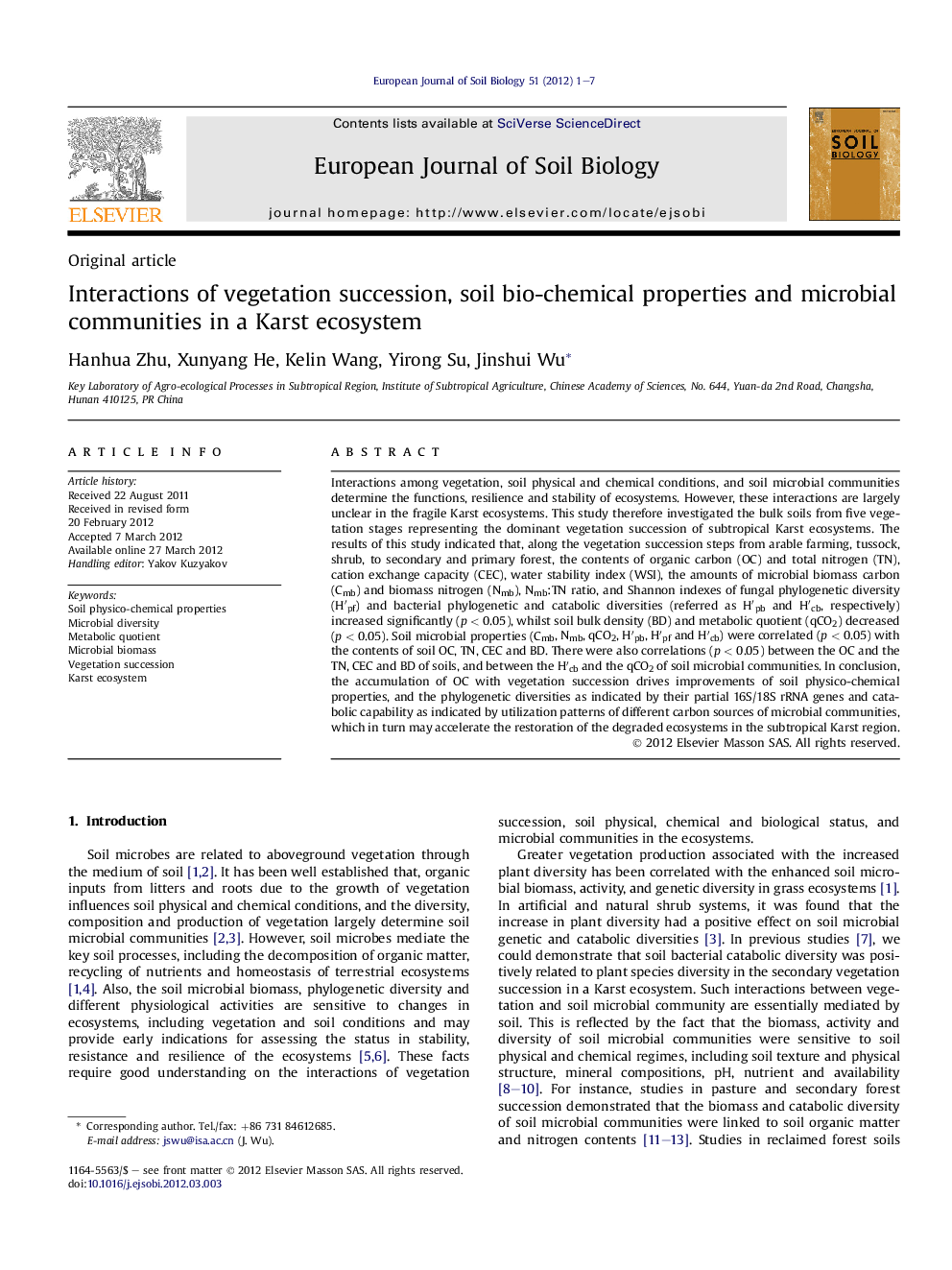| کد مقاله | کد نشریه | سال انتشار | مقاله انگلیسی | نسخه تمام متن |
|---|---|---|---|---|
| 4392067 | 1618141 | 2012 | 7 صفحه PDF | دانلود رایگان |

Interactions among vegetation, soil physical and chemical conditions, and soil microbial communities determine the functions, resilience and stability of ecosystems. However, these interactions are largely unclear in the fragile Karst ecosystems. This study therefore investigated the bulk soils from five vegetation stages representing the dominant vegetation succession of subtropical Karst ecosystems. The results of this study indicated that, along the vegetation succession steps from arable farming, tussock, shrub, to secondary and primary forest, the contents of organic carbon (OC) and total nitrogen (TN), cation exchange capacity (CEC), water stability index (WSI), the amounts of microbial biomass carbon (Cmb) and biomass nitrogen (Nmb), Nmb:TN ratio, and Shannon indexes of fungal phylogenetic diversity (H′pf) and bacterial phylogenetic and catabolic diversities (referred as H′pb and H′cb, respectively) increased significantly (p < 0.05), whilst soil bulk density (BD) and metabolic quotient (qCO2) decreased (p < 0.05). Soil microbial properties (Cmb, Nmb, qCO2, H′pb, H′pf and H′cb) were correlated (p < 0.05) with the contents of soil OC, TN, CEC and BD. There were also correlations (p < 0.05) between the OC and the TN, CEC and BD of soils, and between the H′cb and the qCO2 of soil microbial communities. In conclusion, the accumulation of OC with vegetation succession drives improvements of soil physico-chemical properties, and the phylogenetic diversities as indicated by their partial 16S/18S rRNA genes and catabolic capability as indicated by utilization patterns of different carbon sources of microbial communities, which in turn may accelerate the restoration of the degraded ecosystems in the subtropical Karst region.
► Vegetation succession improved soil physico-chemical and microbial properties.
► Soil OC was key factor on soil microbial phylogenetic and catabolic diversities.
► Soil OC accumulation accelerated the restoration of degraded Karst ecosystems.
Journal: European Journal of Soil Biology - Volume 51, July–August 2012, Pages 1–7